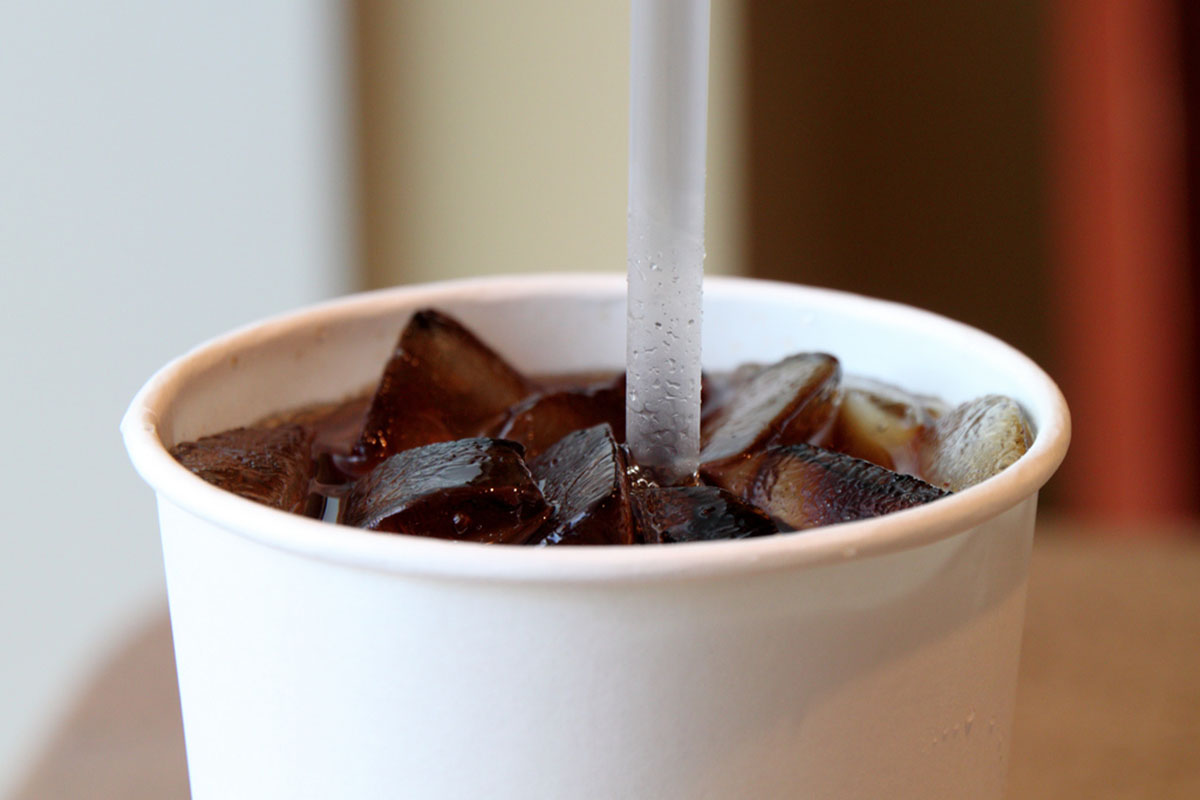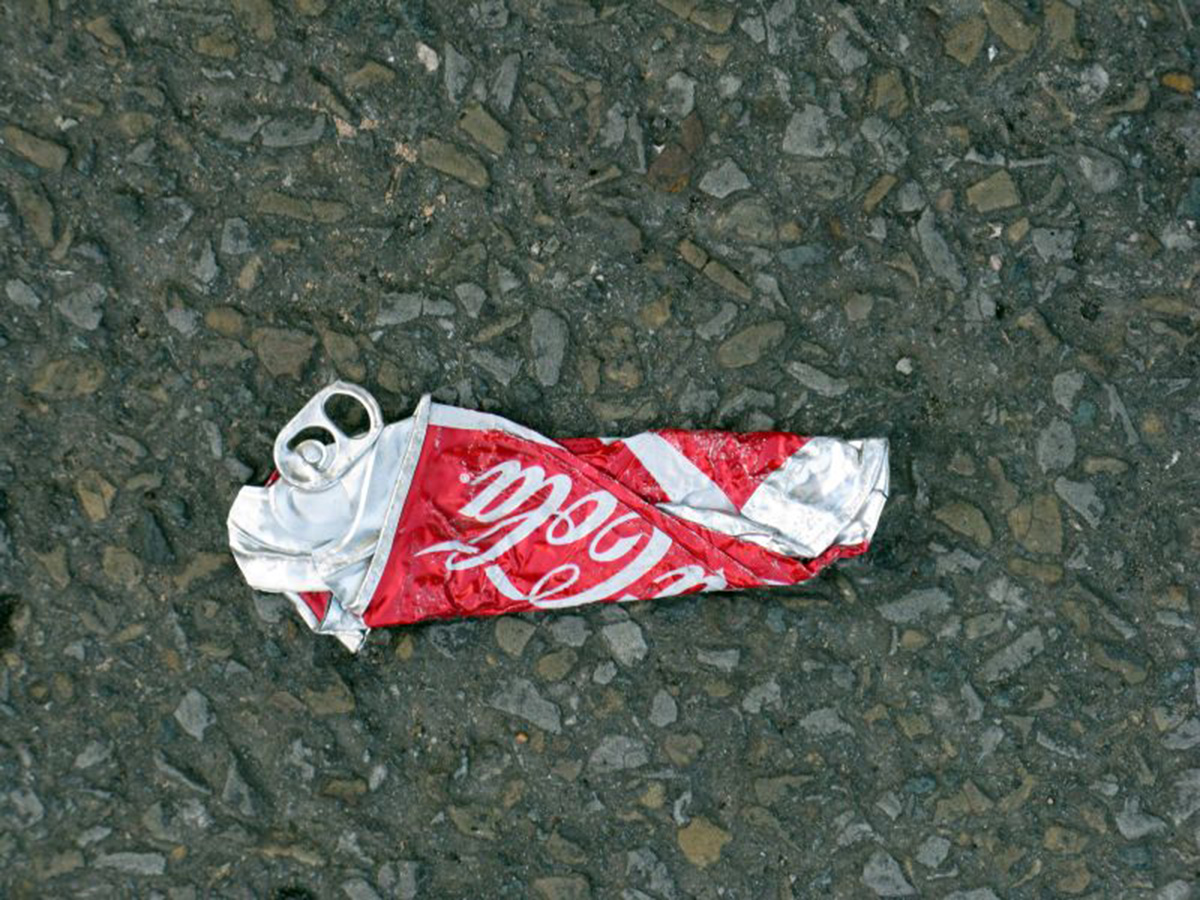Everybody knows that sugar-sweetened soft drinks, such as Coca-Cola, Pepsi, and Dr. Pepper, are the bane of fitness and good nutrition, but why weren't they for our grandparents?
My maternal grandfather, Albert Radford, was born in Spartanburg, South Carolina in 1886 or 1888 (we're not really sure which). Like most boys of his era, he had a full four years of public school education, enough that he would later sit on his front porch and read the New York Times every Sunday morning, and enough that he could do the arithmetic and algebra required in a lumber yard. At the age of 10, my grandfather started working in lumber yards, a valuable worker because he could not only cut wood accurately, he could also calculate footage and costs.

Grandpa Radford lived long enough for me to remember him, although my younger brother never met him. He was affable and grandfatherly and loved to spoil small children (including, to my mother's distress, sharing a cigar with me when I was about two). He didn't have any teeth, but he wasn't especially overweight, certainly not by twenty-first century standards. That was probably because he had a coke addiction. My grandfather drank up to twelve Coca-Colas a day.
Why Didn't Soft Drinks Make Our Grandparents (And Great- And Great-Great-Grandparents) Fat?
In 2015, it is unfathomable that someone who drank a dozen colas a day, in the era before artificial sweeteners, would not be morbidly obese. However, up until 1963, with the introduction of the soft drink Tab, sweetened with saccharin, also a product of the Coca-Cola Company, no one in the USA drank sugar-free soft drinks. (Tab is still on the market in the US Virgin Islands and in Southern Africa.) However, in 1886, probably the year my grandfather was born, Coca-Cola was about to make a big splash in nearby Atlanta, Georgia.
Confederate general John Pemberton had been injured in the Civil War, and became addicted to morphine. He attempted to find a substitute for morphine in a safer, then legal substance, cocaine.
Realizing that there were many people who were addicted to morphine, he marketed his mixture of cocaine and wine as a "French coca wine" in Atlanta, Georgia, until the city and county voted to prohibit the sale of alcohol. That was no problem for Pemberton. He simply reformulated his cocaine-laced beverage with fizzy mineral water, which was thought to have beneficial health effects, coca nut extract for a little caffeine, and sugar.
French coca wine was sold at drugstore counters for the heady price of five cents a glass. The newly released Coca-Cola, however, only cost a penny. In an era in which laborers earned less than $5 a week, even this was not especially cheap.
READ 7 Reasons Not To Drink Coca Cola (And 7 Excuses To Buy It Anyway)
An Early Twentieth Century "Coke Habit"
My grandfather became a major afficionado of Coca-Cola. In fact, his "Coke habit," became an issue of contention between him and my grandmother. By the 1930's, when they had nine children and my grandfather was a foreman at the lumber yard earning $12 a week, he was spending 60 cents a day, one-quarter of the family's entire income, just on Coca-Cola. He consumed approximately 1200 calories of sugar a day just from Coke. However, considering that it was a six-mile (ten-kilometer) walk from their home in Hamburg, South Carolina to his job in Augusta, Georgia, and the job required lifting lumber all day, Grandpa didn't get fat. Maybe it was the cocaine in Coca-Cola?
Is There Really Cocaine in Coca-Cola?
In the 1880's and 1890's until 1903, a glass of Coca-Cola contained 9 mg of cocaine, a little less than the amount that would be a relatively low amount to "snort". In 1904, the Cola-Cola company stopped adding cocaine, and instead added spent coca leaves that already had been processed to remove thier cocaine. Coca-Cola is still made with coca leaf from Peru and Bolivia, processed to remove cocaine by the Stepan Company in Maywood, New Jersey, the only facility in the United States licensed to process coca leaves.
Cocaine, as you might imagine, cancels out a lot of the weight gain associated with high sugar intake. However, even after the cocaine came out of the cola, the sugar was not a problem for most people who drank Coke, even for people like my grandfather who drank up to 12 Cokes a day.
That's because life before the middle of the twentieth century was physically demanding. There were no forklifts. There were no private passenger cars for most Americans. Doing the laundry involved rubbing clothes on a scrub board and passing them through a wringer, and then drying them on a line. There were no instant foods.
Americans of the nineteenth and early twentieth century did not trust milk unless they milked the cow themselves. Spoiled or watered down dairy products were the norm. All meat was pasture-raised, and nothing went to waste, not the brains, not the eyes, not the entrails or the sex organs. My grandfather always got the chicken's brain and my mother always got the chicken's tail on the rare occasions they could afford to serve chicken to their family of eleven. Vegetables were strictly seasonal, and every day was a search for calories.
Flour products and sugar helped fill in the calorie deficit nearly every American suffered.
How many calories a day did Americans burn? Most American adult males needed 5,000 to 5,500 calories a day to function. Most American adult females needed 3,000 to 3,500. In this context, getting 1,200 calories a day from sugar was not a problem. Fat storage did not occur because physical activity required nearly every calorie one could get.
Unless you happen to be a lumber jack or a professional American football player, or you work on a fishing trawler or you wash windows on skyscrapers, chances are that you don't need 3,000 to 5,500 calories a day just to maintain your weight. For you, a sugar-sweetened soft drink has a very different effect on your body. Still, even for you, the effects are not absolute:
- Small amounts of sugar, unless you are diabetic, are actually beneficial. A "small" amount of sugar is up to 25 grams (100 calories) of fruit sugar and table sugar per day. Your liver can use this amount of fructose (or the fructose released from table sugar) as fuel. More than that, without strenous exercise to burn it off, it becomes fat.
- It's the larger amounts of fructose sugar, or table sugar containing sucrose, a chemical combination of glucose and fructose, that are toxic. "Starchy foods" that are digested into glucose are also problematic, but your body can usually tolerate considerably more of them, up to about 1,200 calories a day if you do not have diabetes. You still need to burn more calories than your body takes in to lose weight, and you need to keep calories in roughly balanced with calories burned to maintain your weight. However, sugars in particular and carbohydrates in general are not the problem. It's the amount you consume.
Coca-Cola probably really was a health food in the early twentieth century. It gave quick energy for hard work and strenous activity.
Only as people have become far more sendentary have Coke and similar soft drinks begun to drive weight gain and other health problems.




Your thoughts on this